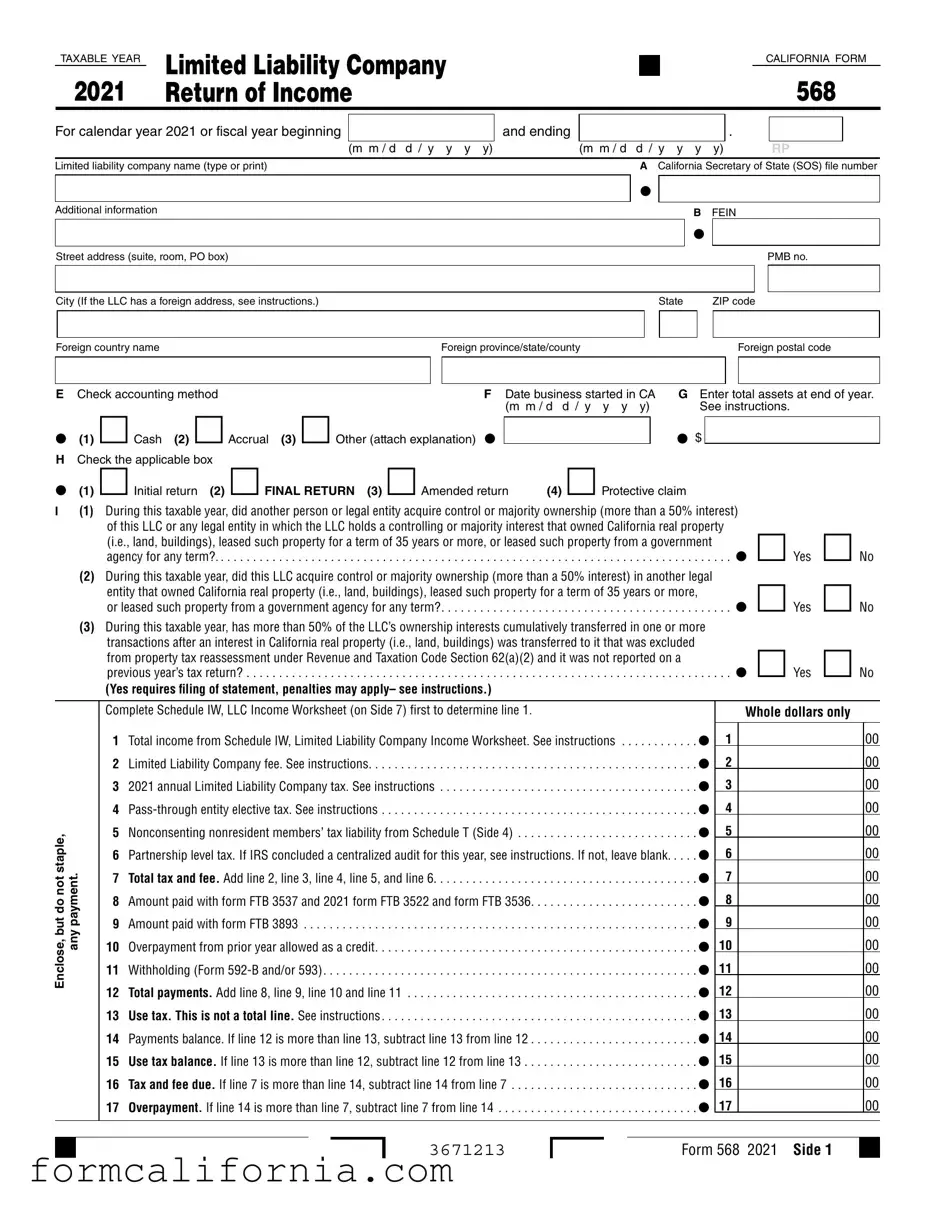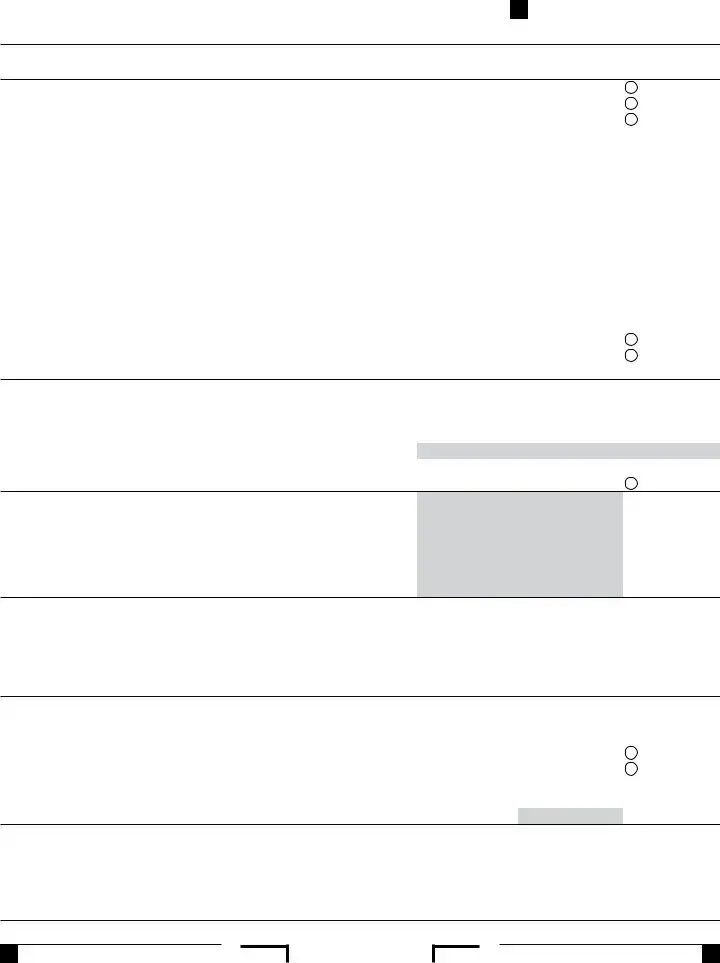The California Form 568 is similar to many other tax documents in both form and function. A document that closely resembles the CA Form 568 is the IRS Form 1065, United States Return of Partnership Income. Both serve entities that are not taxed at the corporate level but pass income to their owners or members. The Form 1065 is used by partnerships in the U.S. to report their income, deductions, gains, losses, etc., much like the Form 568 is used by limited liability companies (LLCs) in California.
Another similar document is the Schedule K-1 (Form 1065), Partner’s Share of Income, Deductions, Credits, etc. This form accompanies the Form 1065 and details each partner's share of the partnership's income, deductions, and credits. The California Schedule K-1 (568) performs a similar role for members of an LLC in California, outlining each member’s share of the LLC’s income, deductions, and credits.
The IRS Form 1120, U.S. Corporation Income Tax Return, though specifically for corporations, shares similarities with the CA Form 568 in its purpose to report income, gains, losses, deductions, and credits and to figure out the income tax liability of the entity. Both forms serve as the primary tax documents for their respective entities to fulfill state or federal income tax obligations.
Form 1120S, U.S. Income Tax Return for an S Corporation, is akin to Form 568 in that it's designed for entities that pass income directly to their owners. S corporations use Form 1120S to report their income, losses, and dividends. Like LLCs filing Form 568 in California, the income of an S corporation is typically taxed at the individual level, not at the corporate level.
The IRS Form 1041, U.S. Income Tax Return for Estates and Trusts, is parallel to the CA Form 568 in structure for reporting income, deductions, and credits. However, Form 1041 is for fiduciary entities. Like Form 568, it is essential for governing the tax obligations of entities other than standard personal or corporate tax filers.
The California Form 540, California Resident Income Tax Return, while intended for individuals rather than businesses, shares the function of reporting income, adjustments, deductions, and credits to a taxing authority, similar to what businesses do with Form 568.
The California Form 541, California Fiduciary Income Tax Return, is the state counterpart to the federal Form 1041. It is used by estates and trusts to report income, deductions, gains, losses, etc., in California, serving a similar role to what the Form 568 does for LLCs.
Form 8832, Entity Classification Election, has a relationship with CA Form 568 in that it allows an entity to elect how it will be classified for federal tax purposes (such as a corporation, partnership, or disregarded entity). This choice can affect how the entity is treated on state forms like the CA Form 568.
The IRS Form 2553, Election by a Small Business Corporation, is used by corporations electing to be treated as an S corporation. Like the relationship between Forms 8832 and 568, the election made with Form 2553 at the federal level can influence the filing requirements and taxation at the state level, including how an entity might file a Form 568 in California.
Lastly, the Statement of Information (SOI) filed with the California Secretary of State, while not a tax document, is essential for LLCs as it keeps the state updated on the entity’s active status and key information. This filing is necessary alongside tax obligations fulfilled by submitting documents like CA Form 568.







